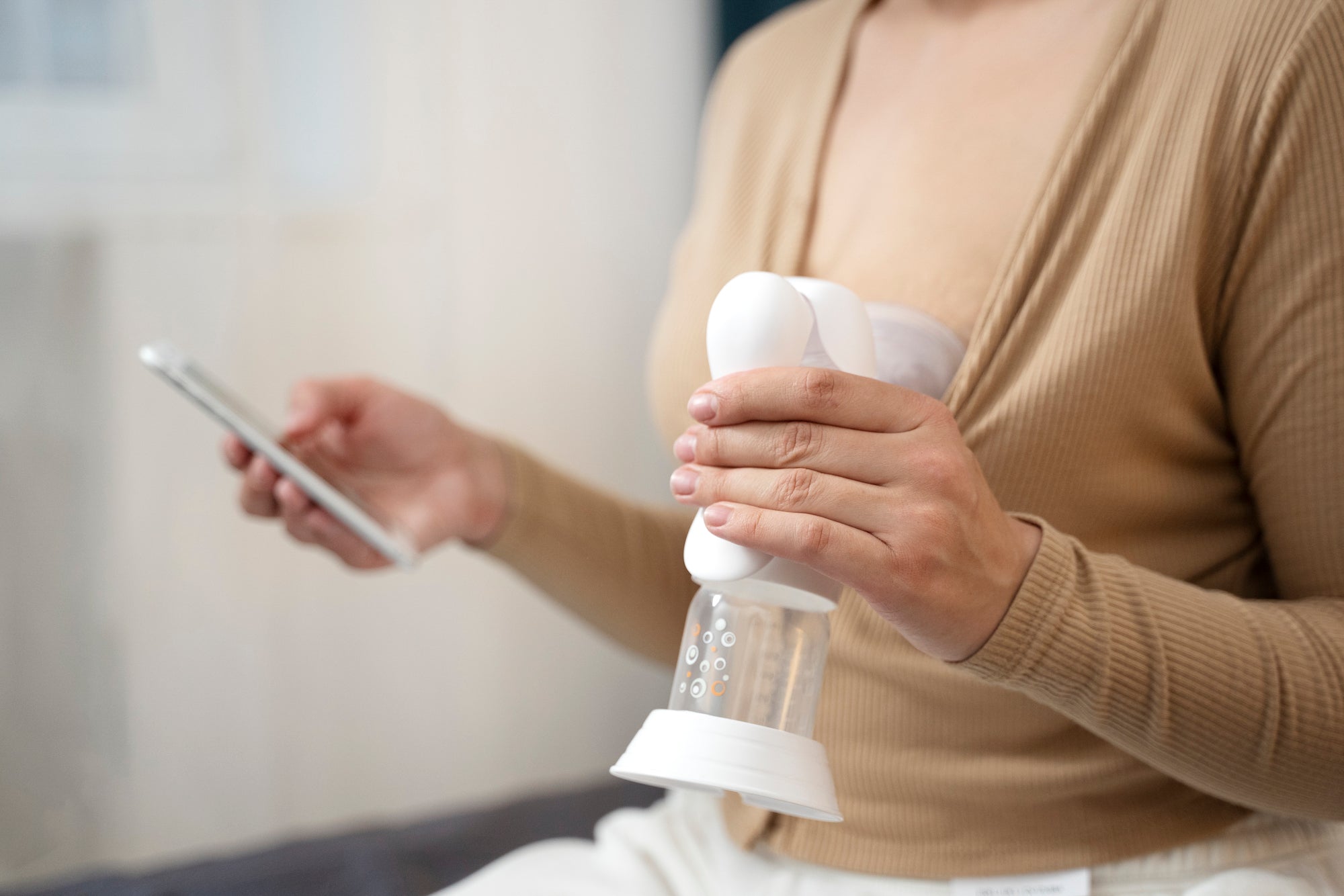
Hey, mama! Sometimes breastfeeding doesn’t turn out the way we originally planned. There’s a whole book of reasons a mom can’t or chooses not to exclusively breastfeed at the breast. The truth is, in our society today, pumping is really the norm to fit our lifestyles. Maybe you’re returning to work? Maybe you're a student? Maybe, for whatever reason, you’d like to provide breast milk for your baby but you have to be away for periods of time. Insert: pumping.
Now let’s be honest. Just because you are able to lactate and make liquid gold does not make you an expert at how to pump! But don’t worry. I’m going to share my top tips to make sure you are getting the most out of your time spent pumping!
Tip #1: The Type of Pump Matters
There are SO many options out there for a breast pump. Not only do you have many different brands to sort though, you also have to decide what style pump you are going to purchase.
Let’s start with the manual breast pumps. Now, these are a great option if you only plan to pump maybe once or twice a week. Don’t count them out! Yes, they are more time-consuming but they don’t require a power source and can really help you out in a pinch! I always recommend moms have one!
Single or double electric pumps. Single electric pumps can run off a motor or battery and just as the name implies, they will pump one breast at a time. Double electric pumps will run off a motor and pump both breasts at the same time.
Wearable breast pumps seem to be a very popular option! Of course, any mom would love the idea of not being tied up to sitting and pumping at a desk or table. However, I will say, if your breastfeeding journey has you relying heavily on pumping, I would recommend that you consider having a different double electric pump to be your primary device.
The truth is that the wearable breast pumps, as wonderful as they are, in comparison, they do not effectively remove your milk as well as other electric double pumps. Now, if you don’t plan to pump every single day, this would be a fine option for you! I would advise against it for everyday use.
There is a hospital-grade pump or a “multiuser”. These are generally for moms who have babies in the NICU or they have a history of low milk supply. They have a bigger motor and pump more efficiently when well maintained. You can rent one of these if you find yourself in the situation of providing milk for your baby in the NICU and later in your breastfeeding journey switch to a personal electric pump.
Tip #2: Flange Fit and Suction Matter
There are two factors that are often overlooked and they actually make the biggest difference in milk output. Number one, the flange fit! Ensuring that your flange is the proper fit for your breasts is incredibly important. If they are ill fitting, it may or may not feel painful, but it will for sure not allow the most milk to be removed.
When determining the pump vacuum levels, or the suction, try for a higher level as long as it remains comfortable. If it feels uncomfortable, try bumping up the level every 60 seconds or so. A higher suction level will yield more milk. Oftentimes, moms are using inadequate vacuum levels, which overtime can lead to low milk expression. Optimal vacuum levels for a breast pump are 190mmHg. So generally, it is great to adjust your pump settings to around 200mmHg.
Tip #3: Breast Compressions/Massage As a Must To Yield More Milk
Another thing aside from the flange fit and the suction levels is adding in breast compressions/massaging to optimize milk expression. When the baby is on the breast, they will instinctively use their hands to massage the breast. This is to stimulate another milk ejection reflex (MER) or letdown. Breast pumps only work as a vacuum, they obviously lack the motion at the breast that babies provide. Adding in gentle massaging and performing breast compressions will increase your milk output, therefore increasing your milk supply!
Tip #4: Changing Pump Parts When It’s Time
A commonly overlooked task is changing the pump parts in an appropriate and timely manner! As a general rule, here are some guidelines! (Always check your manual for specific instructions to your pump).
|
Pump Part: |
Pumping > 3x per day: |
Pumping < 3x per day: |
|
Duckbill valves |
Replace every month |
Replace every 2-3 months |
|
Valve membranes |
Replace every 2-4 weeks |
Replace every 2 months |
|
Backflow protectors |
Replace every 3 months |
Replace every 6 months |
|
Breast shields |
Replace every 6 months |
Replace every 6 months |
Important to remember...
Your value is not measured in how many ounces of milk you can make. Your journey is uniquely your own. Be proud of yourself and all the hard work you do!! You are doing a great job, mama!
Find me on instagram @the_empoweredlatch for more breastfeeding tips and all the support for your lactating journey! The Empowered Latch – Mackenzie, BSW, CBS


